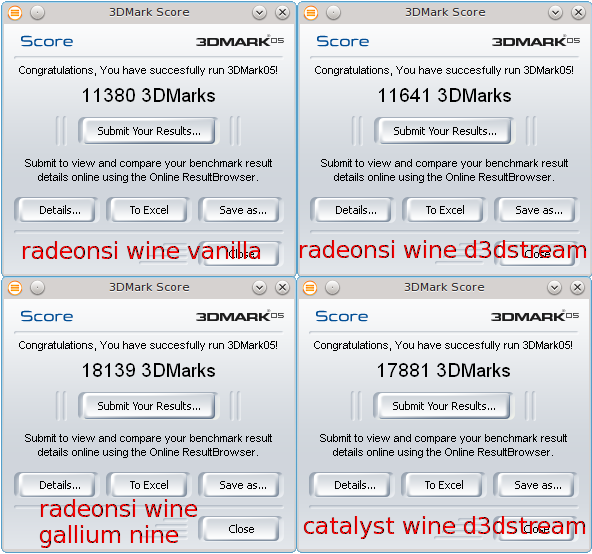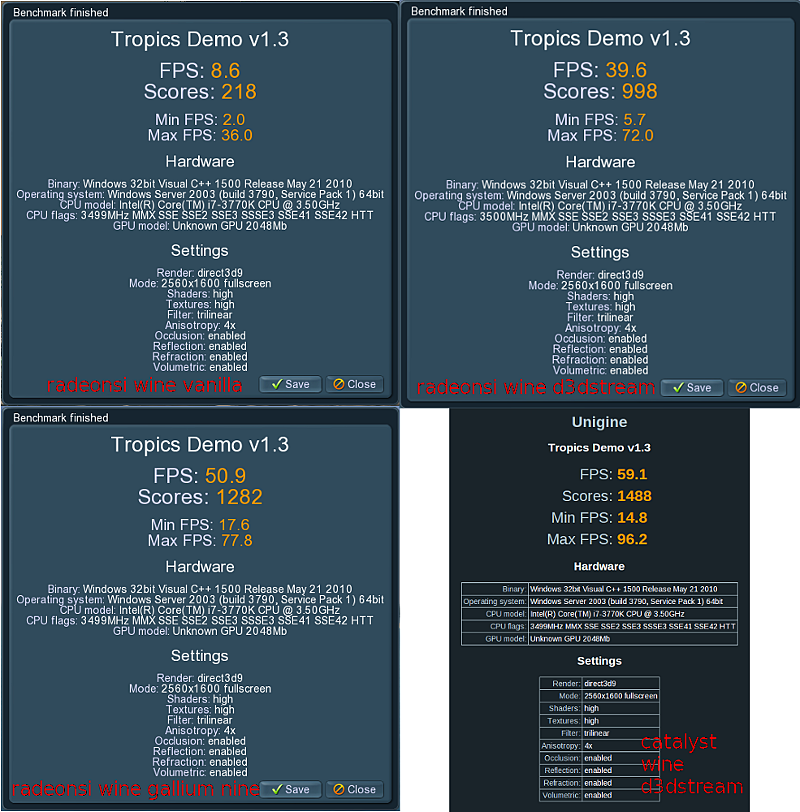How to achieve the best possible performance with wine? I compared vanilla wine using latest radeonsi open source drivers, wine with the CSMT (d3dstream) patchset and wine with the Gallium nine patchset. I also compared the results to latest Catalyst drivers using wine patched with CSMT (d3dstream). Surprisingly radeonsi + gallium nine beats Catalyst + CSMT (d3dstream) in 3DMark2005 and reaches 86% of Catalyst + CSMT (d3dstream) in Tropics!
Soon open source radeonsi drivers with the gallium nine state tracker will be the best available solution to get the most out of wine: users aiming for the best performance should get rid of proprietary blobs if favor of open source drivers.
My card is an AMD HD7950 and I used latest graphic stack from git, including drm-next-3.18. To use gallium nine you will need FOSS drivers with a patched mesa and a patched wine. You can’t use gallium nine with proprietary drivers.
Wine has to translate DirectX => OpenGL => Gallium, which add complications and brings inefficiency. Thanks to the gallium nine state tracker we simply skip the OpenGL translation. More info here: http://ixit.cz/faster-wine-games-with-open-source-drivers-d3d9-aka-gallium-nine/
Both 3DMark2005 and Unigine Tropics runs @2560×1600, here are some screenshots:
You can find my wine vanilla, wine CSMT (d3dstream) and wine gallium nine ebuilds in my overlay.



You forgot Catalyst native OpenGL, without Wine. It will be good to test. Thanks in advance.